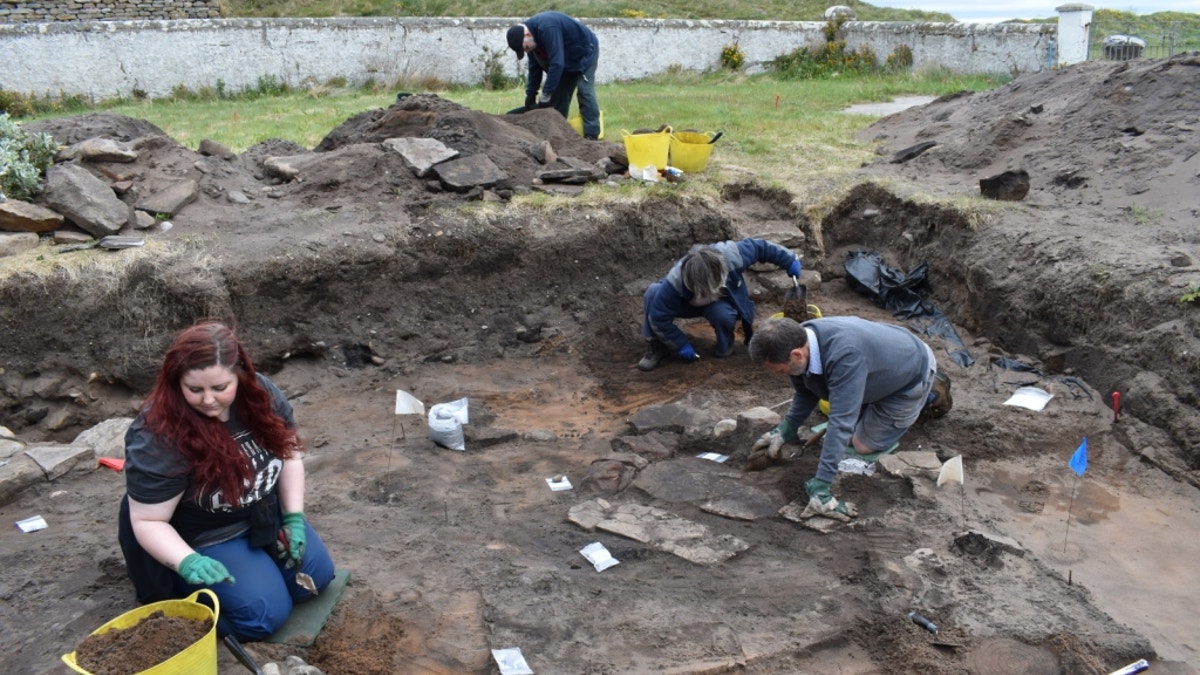
Archaeologists have recently unearthed the traces of an ancient Pictish fort in Scotland underneath an 1800s-era town. (University of Aberdeen)
A fort that is more than 1,000 years old, dating back to the time of Alfred the Great, has been unearthed in Scotland, more than 200 years after it was thought to have been completely destroyed.
The ancient fort was built by the Picts, a loose confederation of tribes who lived in what is now Scotland during the Dark Ages. The fort was likely a major source of power for the Pictish kingdom between A.D. 500 and 1000. In the 1800s, a town was built over the ancient stronghold, known as Burghead Fort, and most archaeologists thought the last remaining traces of the fort were destroyed at that time.
However, new archaeological excavations are revealing major structures hidden beneath the town, including a rare coin that dates to the period of English king Alfred the Great. [Photos: The Search for Alfred the Great's Grave]
"Beneath the 19th century debris, we have started to find significant Pictish remains," Gordon Noble, head of archaeology at the University of Aberdeen in Scotland, said in a statement. "We appear to have found a Pictish longhouse. This is important because Burghead is likely to have been one of the key royal centers of Northern Pictland."
Enigmatic tribes
Almost nothing survives of the mysterious Pictish culture, including the name they called themselves. The Romans first mentioned the Picts, which means "painted people," likely because of their distinctive tattoos and war paint. However, relatively few Pictish writings survive, and much of what historians know about the Picts' early history comes from the accounts of Roman speechwriters such as Eumenius.
Burghead Fort was known since medieval times, but in the 1800s, the town of Lossiemouth was built atop its ruins, and the fort was thought to have been largely destroyed. In 2015, researchers from the University of Aberdeen set out to discover whether any of the ancient kingdom's remains were left. They found ruins from an ancient longhouse with a stone-built hearth. Inside the remains of the building was a coin emblazoned with the image of Alfred the Great, an English king who fended off the Vikings during the heyday of their raids in the late 800s. The coin helps date the structure's occupancy to the later part of the Pictish period, the researchers said.
"Burghead Fort has long been recognized as being an important seat of power during the early medieval period, and is known as the largest fort of its type in Scotland," Bruce Mann, an archaeologist with the Aberdeenshire Council Archaeology Service, said in the statement. "Its significance has just increased again, though, with this discovery. The fact that we have surviving buildings and floor levels from this date is just incredible."
Originally published on Live Science .